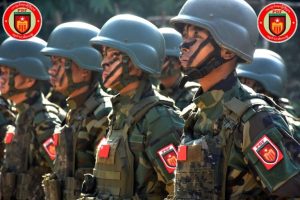
video credit
🌍 World War I (1914-1918): The Great War 🌍
World War I, also known as The Great War, was a global conflict that lasted from July 28, 1914, to November 11, 1918. It was one of the deadliest wars in history, reshaping political borders, societies, and economies across the world. The war involved the world’s great powers, divided into two alliances: the Allied Powers and the Central Powers.
📅 Timeline of Key Events:
| Date | Event |
|---|---|
| June 28, 1914 | Assassination of Archduke Franz Ferdinand in Sarajevo |
| July 28, 1914 | Austria-Hungary declares war on Serbia, starting WWI |
| August 1-4, 1914 | Germany declares war on Russia, France, and Belgium |
| April 6, 1917 | The United States enters the war on the side of the Allies |
| November 11, 1918 | Germany signs an armistice, ending the war |
⚔️ Major Alliances:
Allied Powers:
- France
- United Kingdom
- Russia (left the war in 1917 due to the Russian Revolution)
- Italy (joined the Allies in 1915)
- United States (entered in 1917)
- Japan
Central Powers:
- Germany
- Austria-Hungary
- Ottoman Empire
- Bulgaria
💣 Causes of World War I:
1. Militarism
- European nations had been building up their military forces, creating a tense arms race.
2. Alliances
- Countries formed defensive alliances, meaning that if one country was attacked, its allies were bound to defend it.
3. Imperialism
- European powers were competing for colonies and resources around the world.
4. Nationalism
- Intense national pride and desires for independence among ethnic groups created tensions.
5. Assassination of Archduke Franz Ferdinand
- The immediate trigger of the war was the assassination of Archduke Franz Ferdinand of Austria-Hungary by a Serbian nationalist, Gavrilo Princip, in Sarajevo on June 28, 1914.
📌 Key Battles of World War I:
- Battle of the Marne (1914) – The first major battle that stopped the German advance into France.
- Battle of Verdun (1916) – One of the longest and bloodiest battles in history, lasting over 300 days.
- Battle of the Somme (1916) – Known for its heavy casualties; the first use of tanks in warfare.
- Gallipoli Campaign (1915-1916) – A failed Allied attempt to secure a sea route to Russia through the Ottoman Empire.
- Second Battle of Ypres (1915) – The first major use of chemical weapons (poison gas) by Germany.
🛑 Trench Warfare:
World War I is infamous for its trench warfare, where soldiers lived, fought, and died in trenches dug across the battlefield.
- Conditions: Trenches were muddy, unsanitary, and infested with rats.
- Diseases: Many soldiers suffered from diseases like trench foot and dysentery.
- No Man’s Land: The area between opposing trenches was a deadly zone where few survived.
🔬 New Weapons and Technology:
- Machine Guns – Capable of firing hundreds of rounds per minute, making frontal assaults deadly.
- Poison Gas – First used by Germany, causing horrific injuries and deaths.
- Tanks – Introduced by the British to break through enemy lines.
- Aircraft – Used for reconnaissance, bombing, and aerial combat (dogfights).
- Submarines (U-boats) – Used by Germany to disrupt Allied shipping.
💡 The Role of the United States:
- The United States initially remained neutral, but after Germany’s unrestricted submarine warfare and the Zimmermann Telegram (a proposal by Germany to Mexico to attack the U.S.), the U.S. entered the war in April 1917.
- The arrival of American troops boosted the morale of the Allies and helped turn the tide of the war.
📜 End of the War:
Armistice:
- On November 11, 1918, Germany signed an armistice (ceasefire) agreement, effectively ending the war.
- “Armistice Day” is now commemorated as Veterans Day in the U.S. and Remembrance Day in other countries.
Treaty of Versailles (1919):
- The war officially ended with the signing of the Treaty of Versailles on June 28, 1919.
- The treaty imposed harsh penalties on Germany, including heavy reparations, loss of territory, and restrictions on its military.
- Germany’s resentment over the treaty would later contribute to the rise of Adolf Hitler and World War II.
📝 Outcomes of World War I:
- Collapse of Empires – The German, Austro-Hungarian, Ottoman, and Russian empires collapsed.
- Creation of New Countries – Several new countries were formed in Europe and the Middle East.
- League of Nations – Founded to promote peace and prevent future wars (though it failed to prevent WWII).
- Economic Consequences – The war devastated European economies, leading to widespread poverty and political instability.
- Rise of Fascism and Communism – Political ideologies like fascism in Italy and Germany and communism in Russia gained traction.
💡 Interesting Facts:
- World War I was called “The War to End All Wars” because people believed no conflict could be worse.
- Over 65 million soldiers fought in the war.
- More than 10 million soldiers and 7 million civilians died during the war.
- The Spanish Flu pandemic (1918) spread rapidly among soldiers, killing more people than the war itself.
- Pigeons and dogs were used to carry messages during the war.
⚖️ Lasting Impact of World War I:
World War I changed the course of history. The Treaty of Versailles and the economic depression that followed created conditions that led to the rise of dictatorships and ultimately World War II.
Would you like more details on a specific event, battle, or the impact of World War I? 😊



